You’ve been waiting for months, and it’s finally here: the tenth Edition of 40k. Promising a simplified (but not necessary simple) rules framework, more clarity than ever, and a complete overhaul of unit rules, this new edition is poised to be the best one yet, taking everything learned over the last three years of 9th edition and giving us the tightest rules yet.
In this multi-part series we’re going to go through the game rules, how 10th edition is played, and offer our thoughts on the good and bad of that plus some tactical insight every step of the way. There’s a ton to cover here so we’re breaking it up into more manageable chunks to make it easier to read and browse. For quick navigation, you can use the links below (links will be added as articles are published):
- Part 1: The Core Rules
- Part 2: Playing the Game
- Part 3: The Leviathan Box
- Part 4: The Leviathan Mission Pack
- Bonus: Leviathan Unit Datasheets (This Article)
- Part 5: Crusade
- Part 6: Our Thoughts – A Roundtable
- Part 7: Combat Patrol
It’s a new Edition, so you know what that means – a whole box full of new plastic models, ready for you to unleash on your opponents. In 10th Edition we’ve got (surprise) Space Marines on one side and (actual surprise) Tyranids on the other, pitting ceremite, boltgun and flamer against a monstrous horde of bio-bugs.
As we mentioned in our review of the box itself, there aren’t any datasheets inside it, but never fear – they’re going to be free online along with all the others, and Games Workshop have helpfully sent us a set so that we can share the hot details with you, our beloved reader. Just what is a Psychophage, and why would you want one? Let’s find out…after we look at the Marine half.
Thanks to Games Workshop for providing us with review copies of Leviathan.
Space Marine Datasheets
The Characters
Four indomitable champions of various flavours lead the anti-Leviathan forces, with the Captain in Terminator Armour pre-eminent among them.

This heavy-armoured behemoth is a Leader that can join your Terminator Squad (or in wider play Terminator Assault Squads and Relic Terminators), and provides two powerful buffs for them. First up, Rites of Battle lets you use a Stratagem on the unit for free once per battle round, even if another unit has already been targeted with it that phase. This rules – while rarer, there are still some stratagems out there that cost you 2CP, so that’s a big discount, and this includes some important core ones like Heroic Intervention. That one is clearly where this is aimed here – the other ability the Captain provides is Charge re-rolls for the unit, so a squad of Terminators with him at the head can absolutely dominate the centre of the battlefield. He also adds some hefty additional killing power, sporting six attacks with a S5 AP-2 D2 Relic Weapon. He’s also pretty chunky at T5 6W and a 4+ Invulnerable Save, so even if his bodyguard fall against the horde, he won’t go down easily. The datasheet also gives a preview of some other options you can take with your existing Terminator Captains – Thunder Hammers with Devastating Wounds, paired lightning claws with a mighty seven Twin-linked attacks, and a Chainfist with Anti-Vehicle 3+, helping him carve through vehicles. Finally, if your Captain is modeled with a shield, this is now a Relic Shield, adding an extra wound (as Terminators appear to just have a 4+ Invulnerable Save these days). Everything a Space Marine should be, all-around, though you can also immediately see 10th’s trend away from having as many re-rolls, with this Captain not providing any.
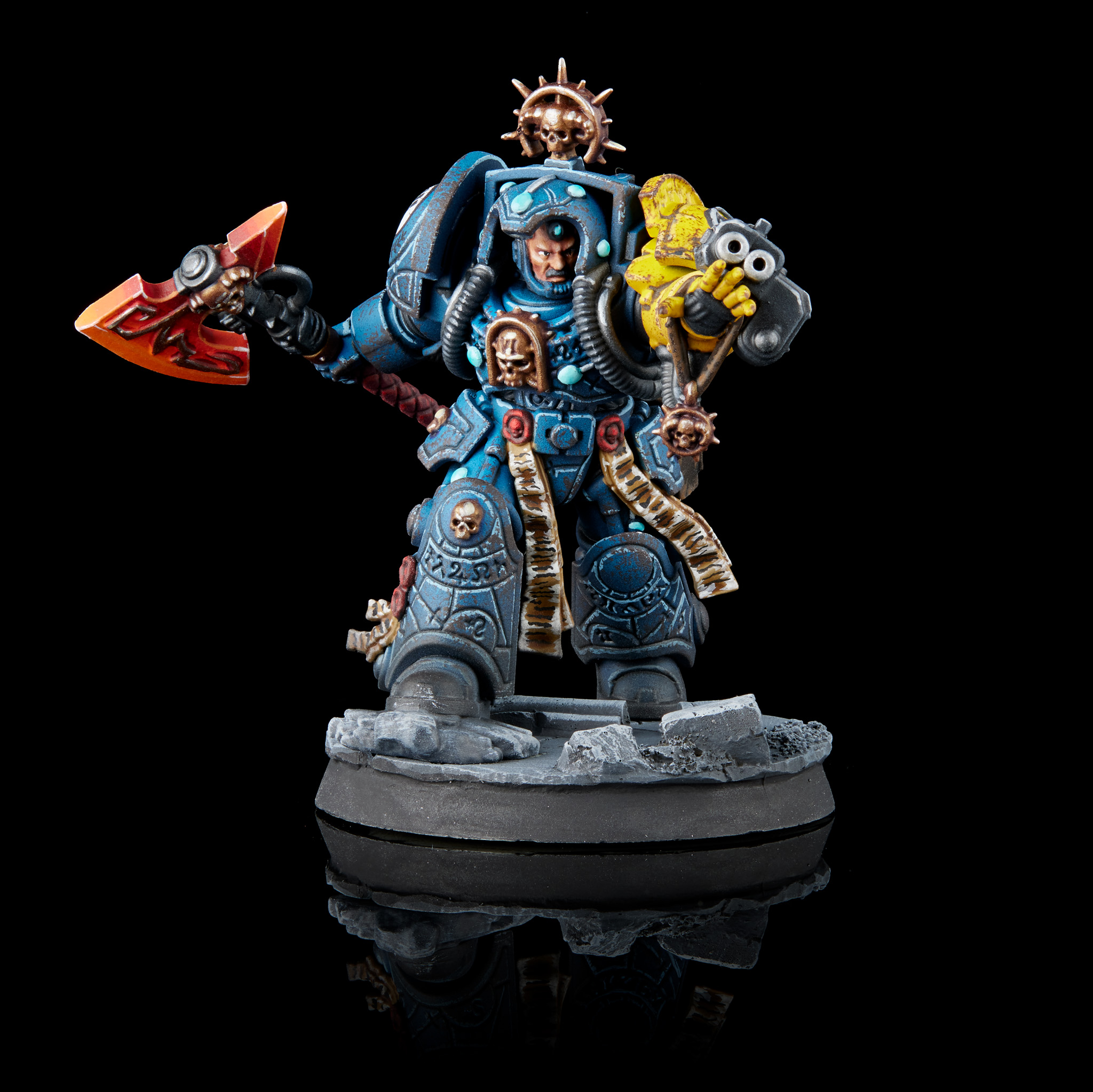
If you want an alternative Leader for your Terminators, you can instead take the Librarian in Terminator Armour. He provides two buffs – the Psychic Hood that gives them a 4+ Feel No Pain against Psychic Attacks (a tag on some weapons), and Veil of Time, providing Sustained Hits 1 for some powerful anti-horde capabilities. He also has a Psychic Attack of his own, the classic Smite, providing either a moderate-strength Psychic Attack at 24” range or an extra-scary one with Devastating Wounds at the cost of being Hazardous. He’s slightly less durable and murderous than the Terminator Captain, but potentially does more to boost the damage of the unit, especially against the kind of hordes that you might find in this very box.
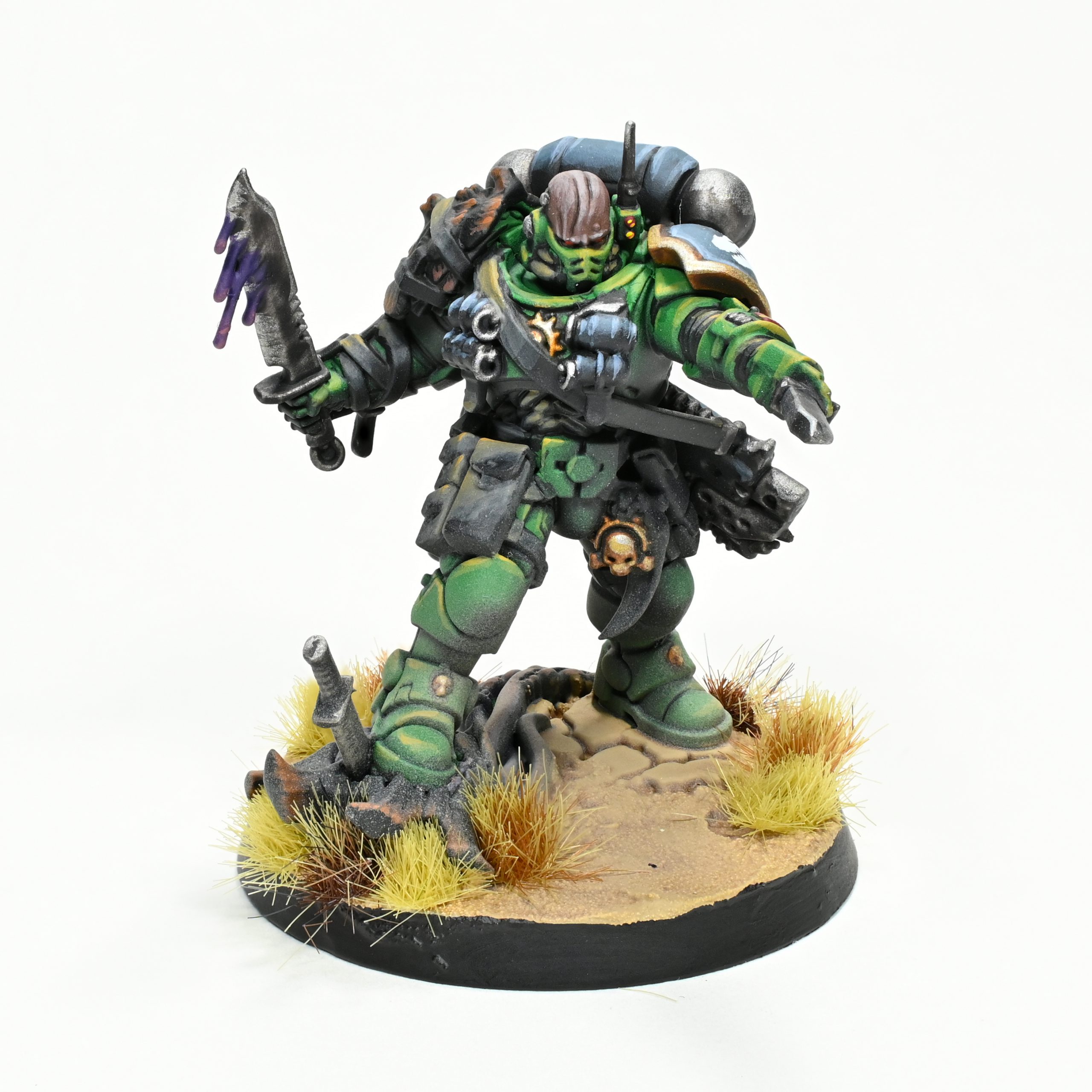
Our next entry is the first Lone Operative we’ve seen, the Lieutenant with Combi-Weapon. According to the flavour text on his datasheet, he’s been behind enemy lines hunting out intel, and has come back with an absolute bonanza of special rules. He’s not super durable (though does have Feel No Pain 5+ and Stealth), but is very hard to pin down thanks to the combo of Lone Operative and Evade and Survive – once per turn, when an enemy unit ends a move within 9” of him, as long as he’s not engaged he can make a Normal Move. This is a great example of 10th giving you more reactive things to do in your opponent’s turn, something we’ve very excited about. Unusually for what we’ve seen of 10th, he does also bring some re-rolls – at the start of the first battle round, you pick a priority objective, and he grants your nearby units re-roll 1s to wound when targeting an enemy unit that’s within range of that objective. You get to select this after armies have deployed, so you can decide whether to use it to challenge the enemy where they’re planning to focus their forces, or to pick them off from a weaker flank. Finally, he can Infiltrate, which doesn’t super do much in concert with the other units here, but could allow for some powerful early plays with other Phobos units as you expand your collection. Lots of cool things on show, overall.
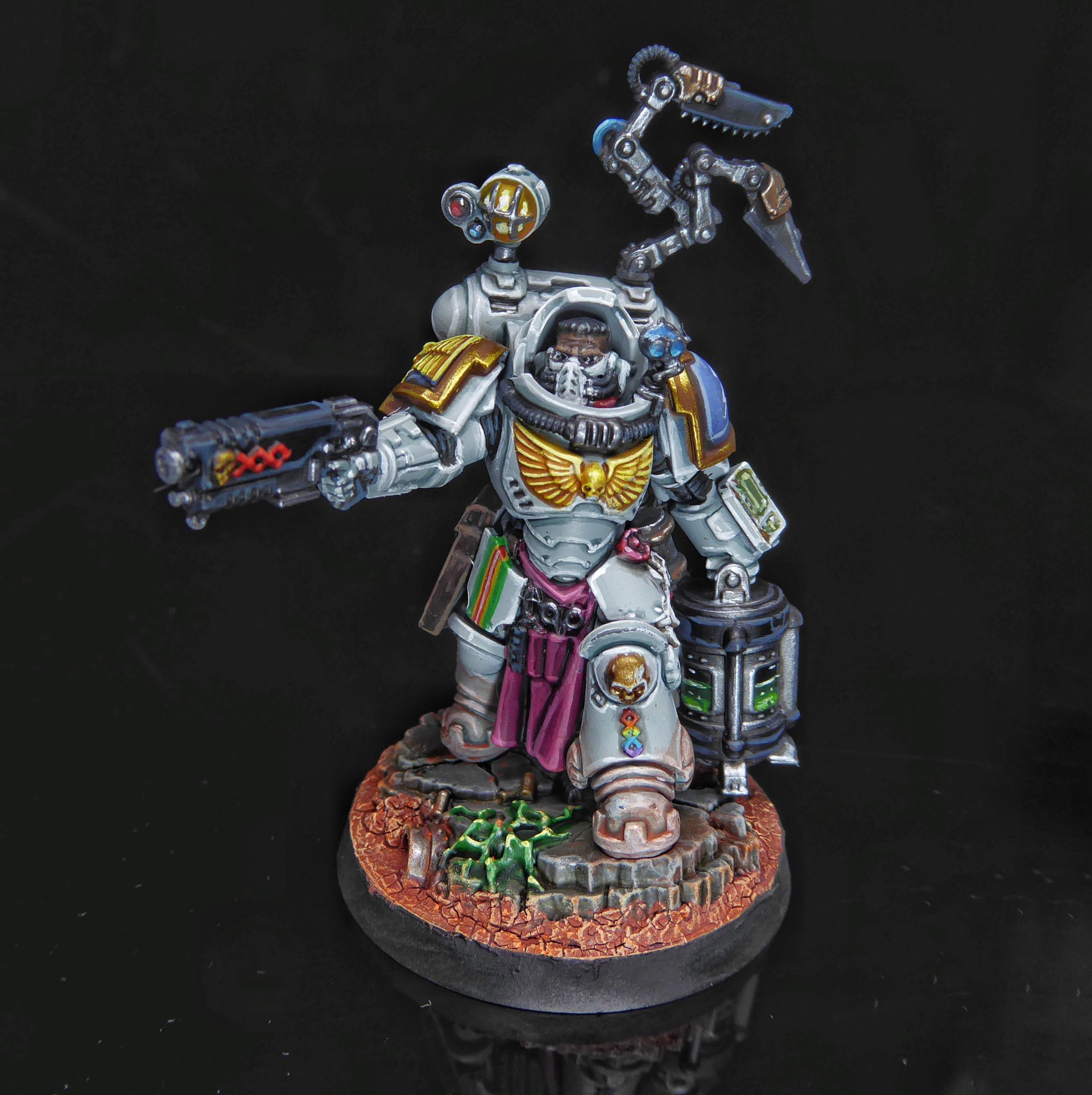
The final model here is a bit of an odd-one out, and honestly doesn’t fit super well. The Apothecary Biologis is a Gravis-armoured Apothecary showing off a mighty T6 defensive profile, and is clearly mostly designed to boost an attached Gravis unit, offering them Lethal Hits. In addition, if the unit kills something in melee then the Apothecary gains an impressive Objective Control of 9 for the rest of the battle. This seems ideal for taking something like Aggressors to an objective, wiping the enemy off, then holding the position forever, but there aren’t any joinable units in this box! He does have a starting OC of 3, so can be somewhat decent used just to babysit an objective behind a wall in this box, but he’ll definitely need the full index to really shine.
The Infantry
Leviathan brings three Marine Infantry units, one wholly new and two re-imaginings of classics.
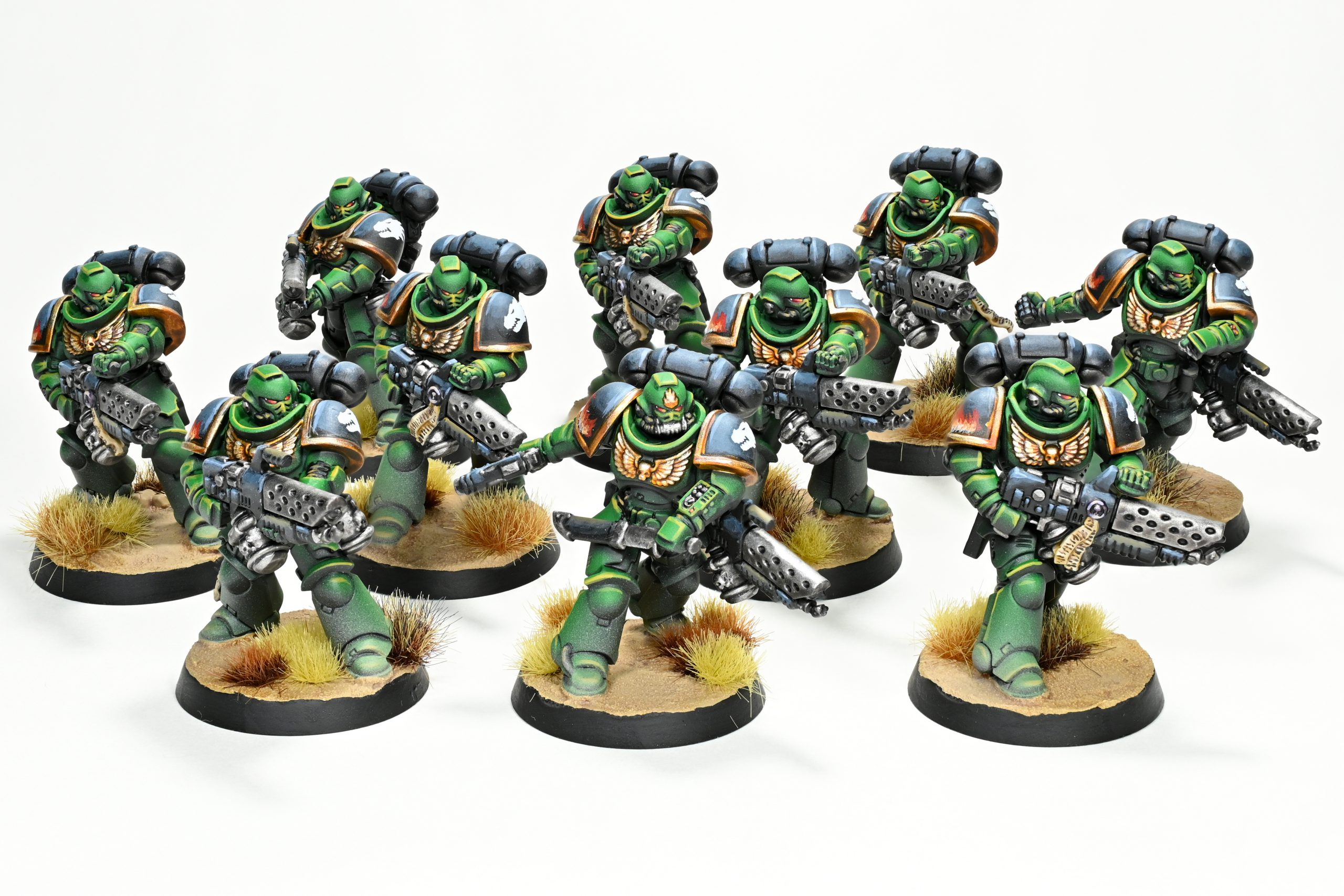
Starting with the new we have the Infernus Squad – Primaris Marines in Tacticus armour sporting a Pyreblaster each. This is a Torrent (auto-hit) and Ignores Cover weapon that throws out d6 S5 shots, making it perfect for clearing out the waves of Gaunts on the other side of this box. They also show off the Battle-shock mechanic – after they shoot in your Shooting Phase, you can select an INFANTRY unit that was hit by their attacks, and force them to take a Battle-shock test. This combines with how very good they are at Overwatch to make them fantastic at dominating the objective game – forward with fire and flame.
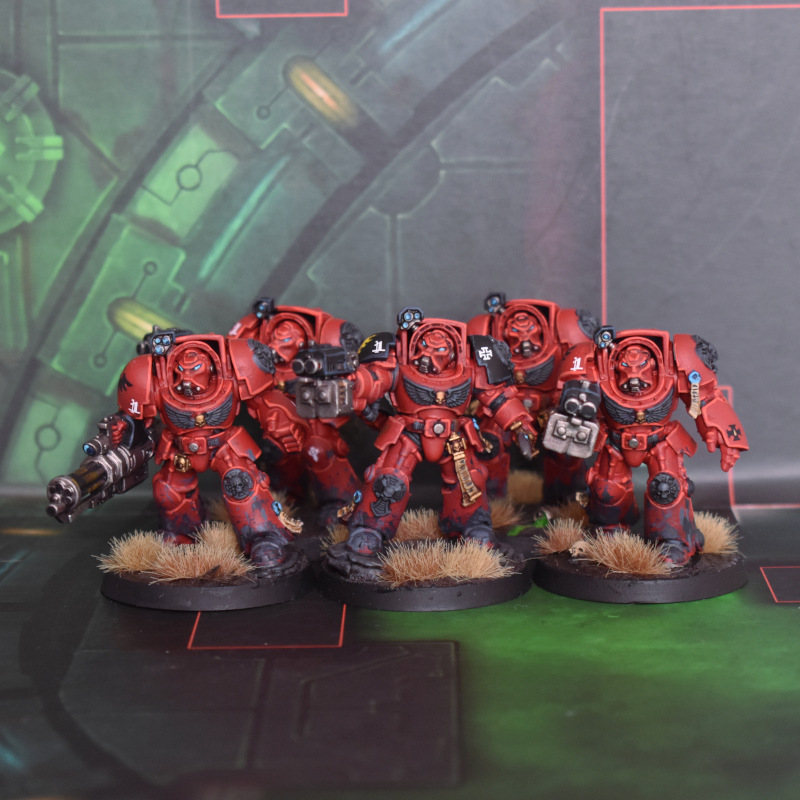
Also good all-rounder board domination tools are Terminators. These have already been shown off on Warhammer Community, and are a pretty potent force on the table. They’re durable at T5 3W with a 2+ save and 4+ invulnerable, and have decent anti-infantry firepower from their storm bolters and Devastating Wounds assault cannon. They can also ignore hit, weapon skill and ballistic skill modifiers thanks to Fury of the First, and get +1 to hit against the current target of your Space Marine Oath of Moment. They also come with a free teleport homer, which you can set up on the battlefield at the start of the battle, and then use Rapid Ingress on this unit for free as long as they set up within 3” of it. Make sure to place it somewhere the opponent can’t easily overrun, as you still have to be 9” away from them. Terminators obviously have a huge range of models available beyond just these ones, and the Datasheet also comes with the option of chainfists (Anti-Vehicle 3+ but less accurate than a power fist) or a heavy flamer/cyclone missile launcher as an alternative improved gun. You basically know what to expect with this unit, but that doesn’t make them any less scary, particularly with either of the buffs from the Terminator Characters!
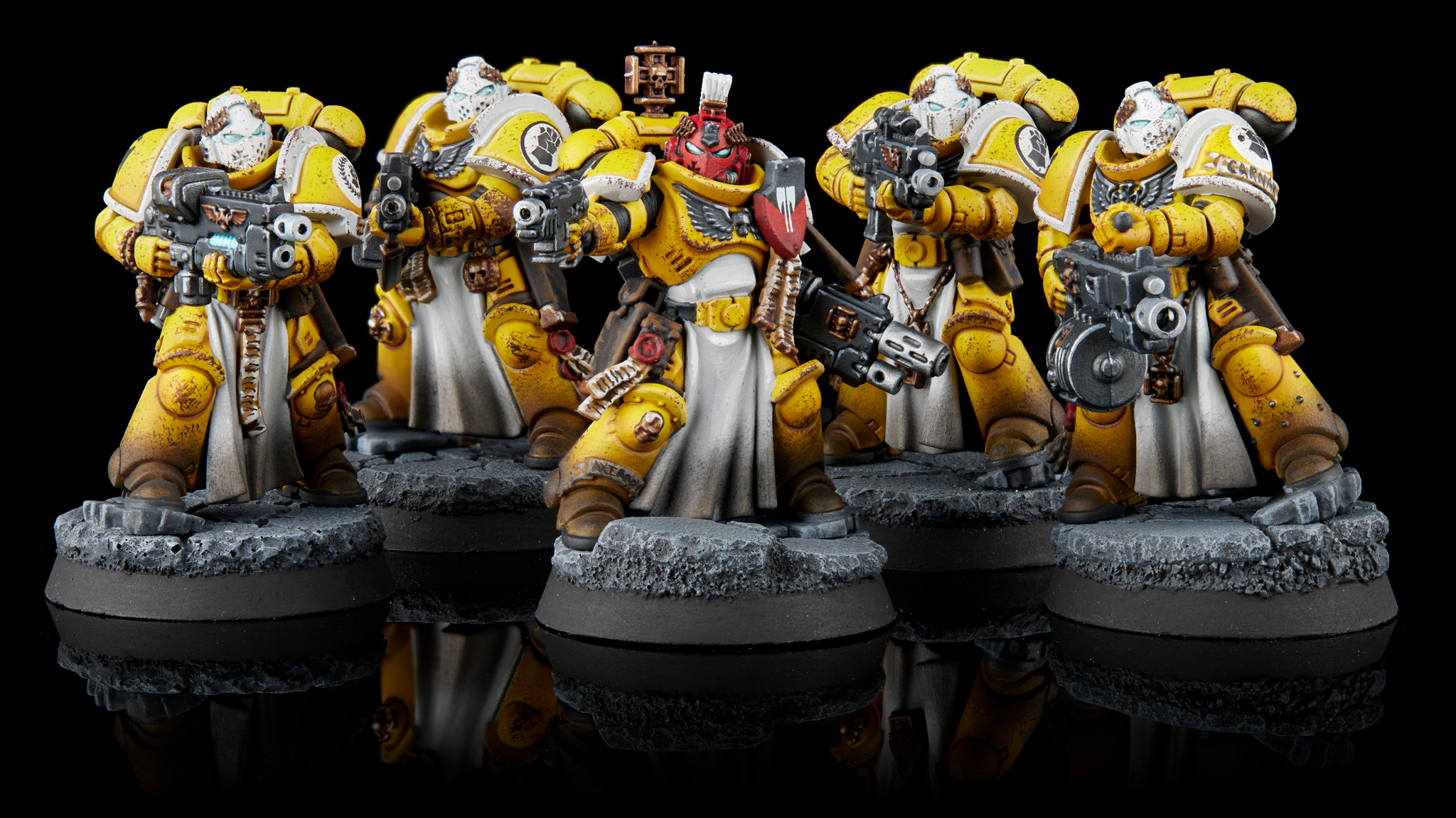
Finally, another re-imagined classic are the Sternguard, now with Primaris-scale models (though the loadout is compatible with older units). These are the pleasant surprise of the units on offer, because they absolutely whip. Sternguard have struggled for a niche in the last few Editions, only turning up when you could cram undercosted upgrades on them, but in 10th they take their role of being “best at bolters” extremely seriously. The Sternguard bolt rifle is a 2 shot gun with all of the rules seen across bolt rifle types last edition – Rapid Fire 1, Heavy, and Assault – making them deadly on the move, up close, and when their feet are planted. In addition to this, all their weapons have Devastating Wounds, meaning they’ll reliably push some Mortals through on any target, and obliterate your chosen Oaths of Moment prey. It’s also especially spicy on the heavy bolter that one of them is carrying, which also has Sustained Hits 1 and D2. When times are particularly dire, they also get access to a once-per-game use of Bolter Drill, allowing them to shoot again as long as their first volley killed a unit! Really the only issue with them is that two of the models that come in the box have combi-weapons instead of the bolters, which have their own cool trick (Anti-Infantry 4+ and Devastating Wounds), but lose a lot of their lustre here because the unit already gets Devastating Wounds on all their guns. Even those are good though, and this unit looks powerful as is, and like a serious competitive contender when fully decked with bolters.
The Dreadnought

Glancing over at the other side of the box, there are some hefty looking bugs advancing towards the Marine lines, and the Ballistus Dreadnought gives you some big guns to try and stop them. Mostly, this model is interesting because of what it tells us about where Strength and Toughness values now sit on heftier stuff – the Dreadnought is T10 (highest of any model in the box) and the krak missiles and lascannons that it’s toting hit at S10 and S12 respectively. That suggests that we’re basically stretching stuff out at the top end, and that 10 is probably roughly equivalent to 8 in old money, and 12 is the new 9. What it means in this box is that its guns are never going to wound on worse than 3s against key targets, and it has the Ballistus Strike ability to help alpha monsters – if it targets something that is not below half strength, it can re-roll the hit roll. Vicious stuff. It also has a 2+ base save, something we’re assuming is a substitute for Duty Eternal from old editions, which does not appear on this unit.
Tyranid Datasheets
The Characters
Over on the Tyranid side of the box there are only a couple of Characters, as they’ve got a much wider diversity of other units to play with. Both of these are entirely new models, and the first is something of a centrepiece, seen upsetting a Librarian in the Leviathan reveal trailer.
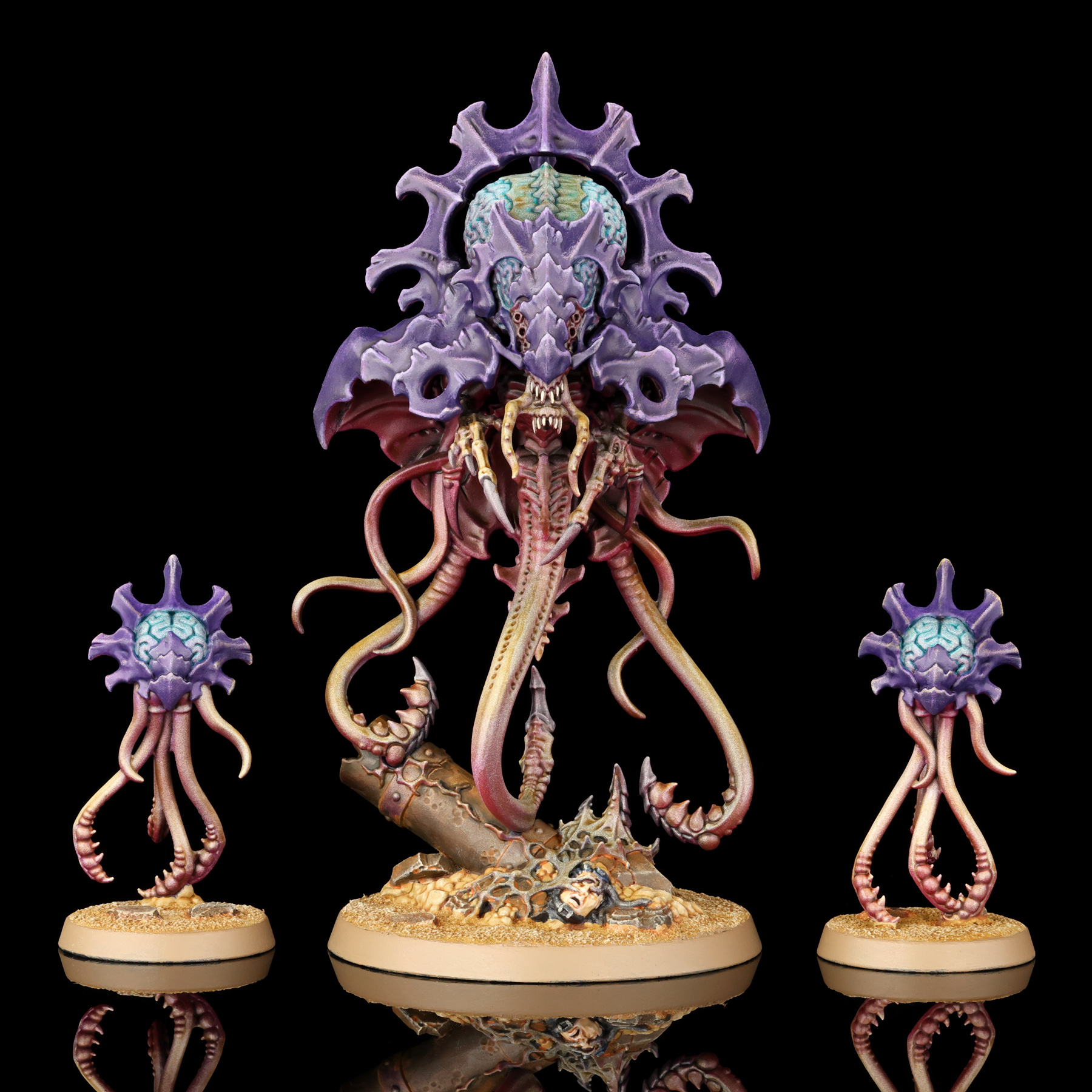
The Neurotyrant is an ultra-powerful Synapse node that can also melt things with its mind. It comes with two little Synaptic Relay nodes, and can hand each of these out to a unit within 12” in your Command Phase, allowing them to count as being within Synapse Range until your next Command Phase even if they range out far and wide. This is ideal for ensuring that your scary bugs can go out hunting without worrying about Battle-shock. It also magnifies the offensive aspect of the Hive Mind – if you have one of them on the battlefield, when you unleash the Shadow of the Warp opposing units subtract 1 from their Leadership test. Something that’s notable, going through these datasheets, is that even senior Space Marines like the Terminator Captain are only on a Ld of 6+ at baseline, so even against elite armies a table-wide set of Battle-shock tests at -1 is going to have a severe impact, making this really good. Finally, the Tyrant is no slouch at killing stuff, both boosting the hit rolls of its unit (and wound rolls against Battle-shocked targets) and unleashing a terrifying Psychic Scream, a 2d6 S5 AP-1 Torrent/Ignore Cover weapon that hits for D2, ideal for roasting Sternguard who get a bit overconfident, including on Overwatch. Of the units here, the Neurotyrant can join the Neurogaunts, who don’t do masses with the boost to hit rolls it provides, but it can also join Tyrant Guard, and it certainly seems plausible that that could create a pretty terrifying all-round unit!

The other Leader here is the Winged Tyranid Prime, who similar to the Apothecary Biologis is a bit of an odd-one-out, not being able to join any of the units in the box. However, they’re a bit more useful roving on their own, as long as you’re careful not to get them smoked by the Dreadnought, as they’re speedy, have a good number of D2 melee attacks, and are a Synapse unit. They can join Gargoyles and Tyranid Warriors, the latter of which appear to have been split into two datasheets, one for shooting and one for melee. Leading Warriors looks like its ideal role – it hands out Sustained Hits 1, and while the Warriors aren’t as fast as it is, having a speedy, FLY model in the unit can provide considerable extra reach for pulling off charges, definitely of value. Last up, punking this guy out in melee is never going to be entirely safe, because it Fights on Death on a 4+, potentially taking some mean old Marines with them.
Gribblies
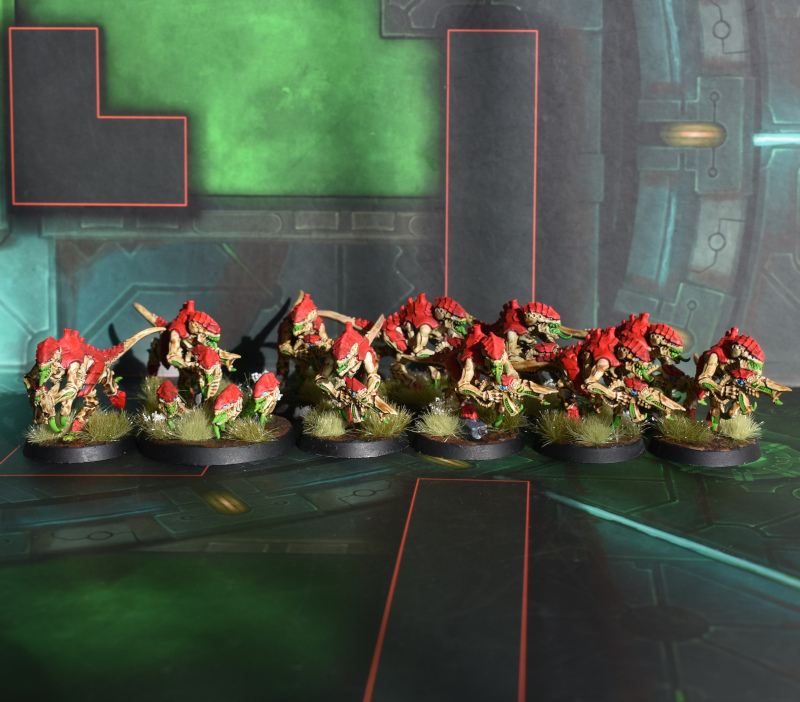
Tyranids are spoilt with a selection of five different small-medium bugs. Let’s go from small-large. At the low end of the size scale we have Ripper Swarms. These tiny bugs show off some interesting things that the designers can do with Objective Control – Rippers have OC 0, so can’t hold objectives, but halve the Objective Control stat of any enemy unit within engagement range of them. This means they can work in concert with your other units to trump higher objective control values like that seen on the Ballistus Dreadnought (who has OC 4). They can also deep strike, and against stuff that isn’t as tough as Marines have enough attacks to gradually chip away wounds.
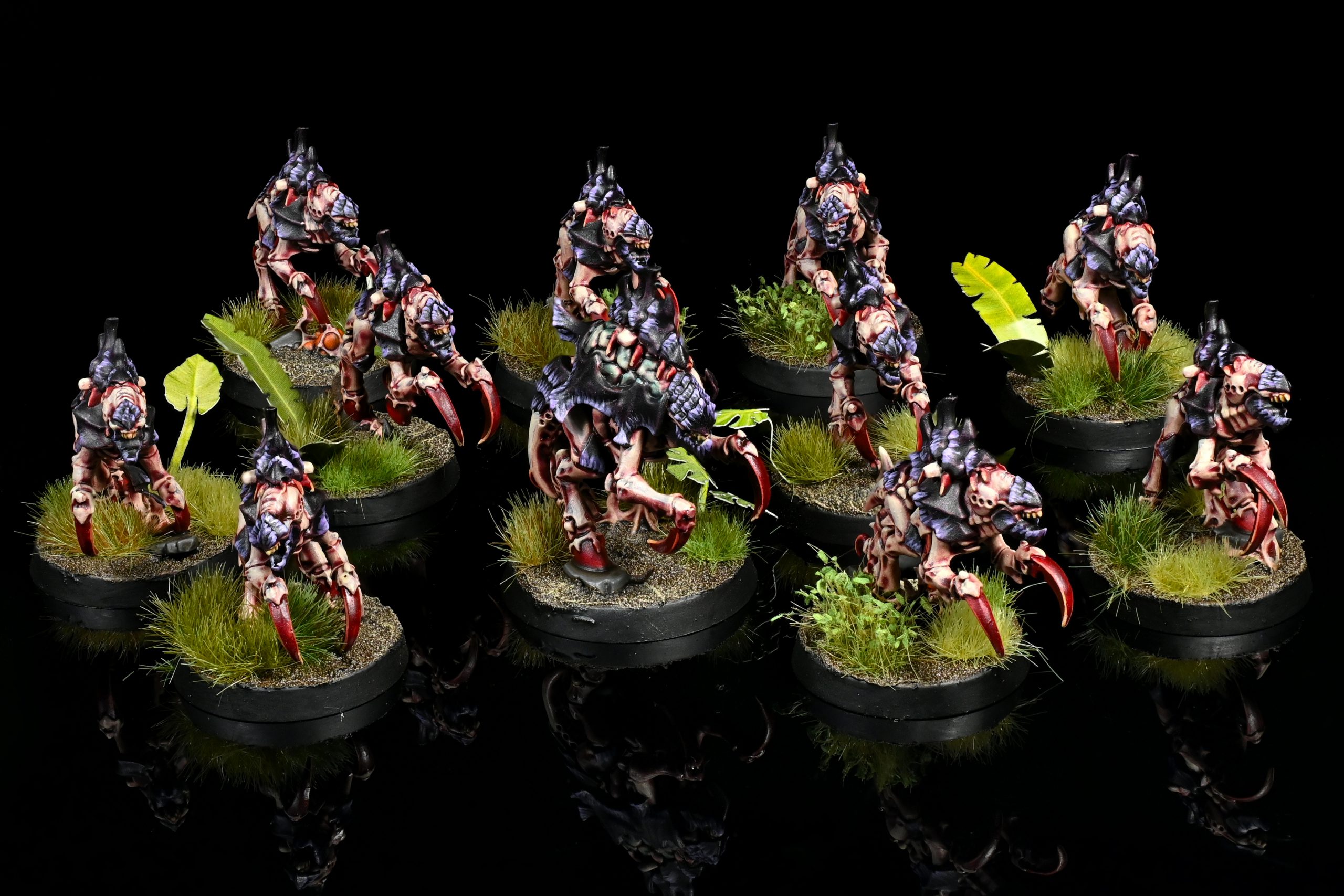
Going up one on the scale, we’ve got a whole new unit in Neurogaunts. These are bodies – they fill space, protect your Neurotyrant, and spread Synapse – as long as they’re within Synapse Range, they gain the Keyword themselves. Putting the Neurotyrant in with this unit is also helpful because the Synaptic Relays ability is based on being in range of the Neurotyrant’s unit. That said, the tradeoff is that this makes your Neurotyrant’s unit much easier to shoot at since it’s now in a unit full of paper thin bodies that want to be stretched wide. They’re pretty terrible offensively (and defensively, 6+ save only), so hopefully they’re a very cheap way to put lots of bodies on the table.

Ever so slightly bigger are Termagants, a returning classic. These are a bit more capable in their own right than Neurogaunts, as they’ve actually grown some guns, able to select from three different weapon profiles (all AP0 D1, but with different ranges, shots, and in the case of Spinefists Assault and Twin-linked). They’re also a bit tougher with a 5+ save and have OC 2, so the Marines are going to need to wade through a good number to clear an objective. That’s particularly true because of the Skulking Horrors ability, which lets them make a Normal Move of d6” when an enemy ends a move within 9” of them once per turn. This is a little less reliable than the Marine Lieutenant’s version, but can let them pile a few more bodies onto an objective at a key moment or scurry out of charge range.
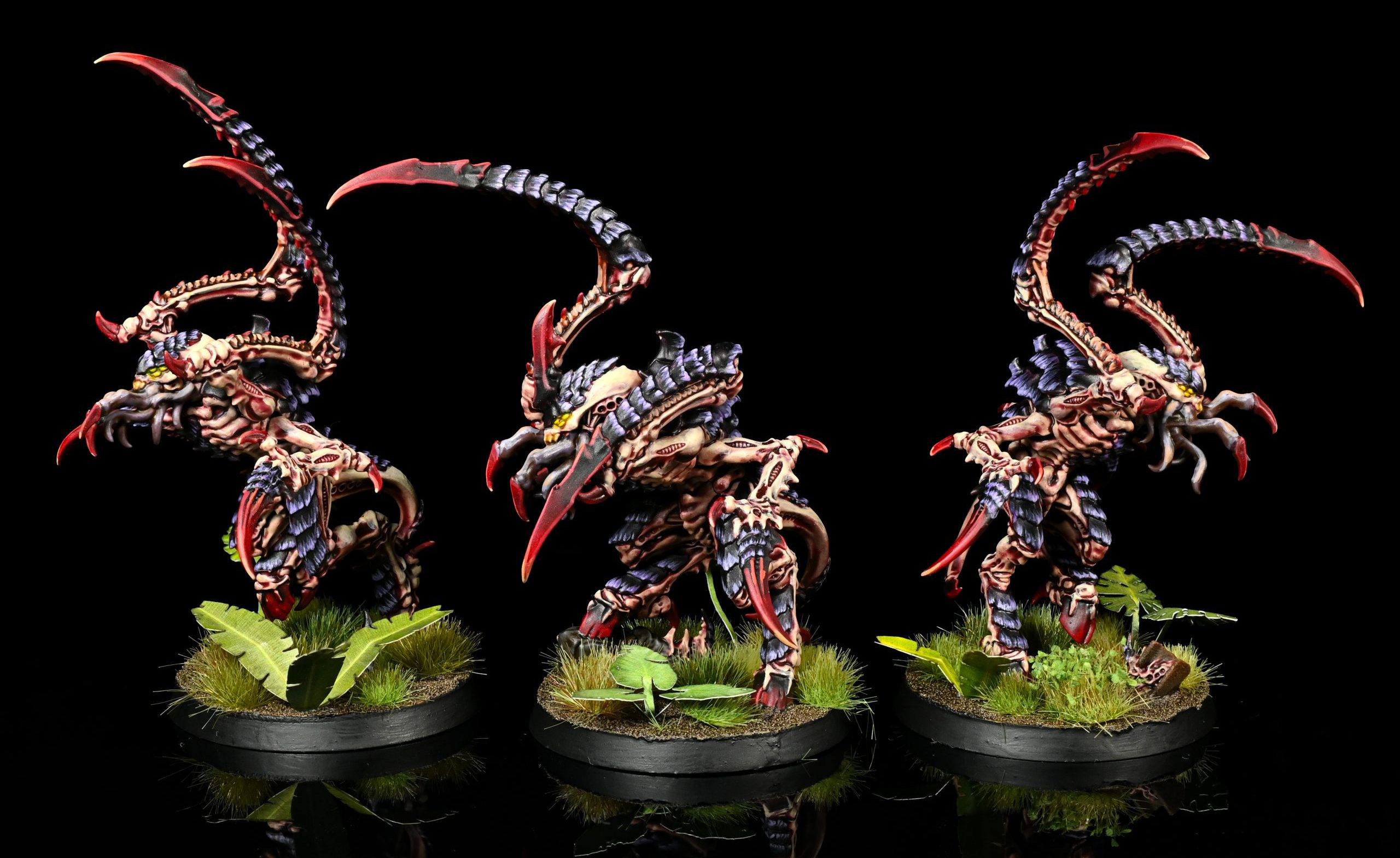
Following them we have a new melee unit, the spindly, scythe-armed Von Ryan’s Leapers. These have a lot going on and are pretty cool – they’re moderately durable (T5 and 3W), hit reasonably hard (6A each at S5 AP-1, though only D1) and have a very cool combo of abilities. They can use Heroic Intervention for 0CP, and also have Fight First. As our Core Rules review highlighted, this is a super strong combo in 10th Edition, as the non-Active player now gets to select the first unit to Fight in the Fight First step. That means a counter-assault with such a unit can really ruin the opponent’s day, and to cap all of this off the Leapers are Infiltrators, so can start the battle in pouncing position. These look like one of the more promising units in the box from a competitive standpoint (points allowing), as using Infiltrators to skirmish for early objectives has historically been a key part strategy in tournament play. Marines are maybe not the ideal target for these, but they’ve got a tonne of potential.
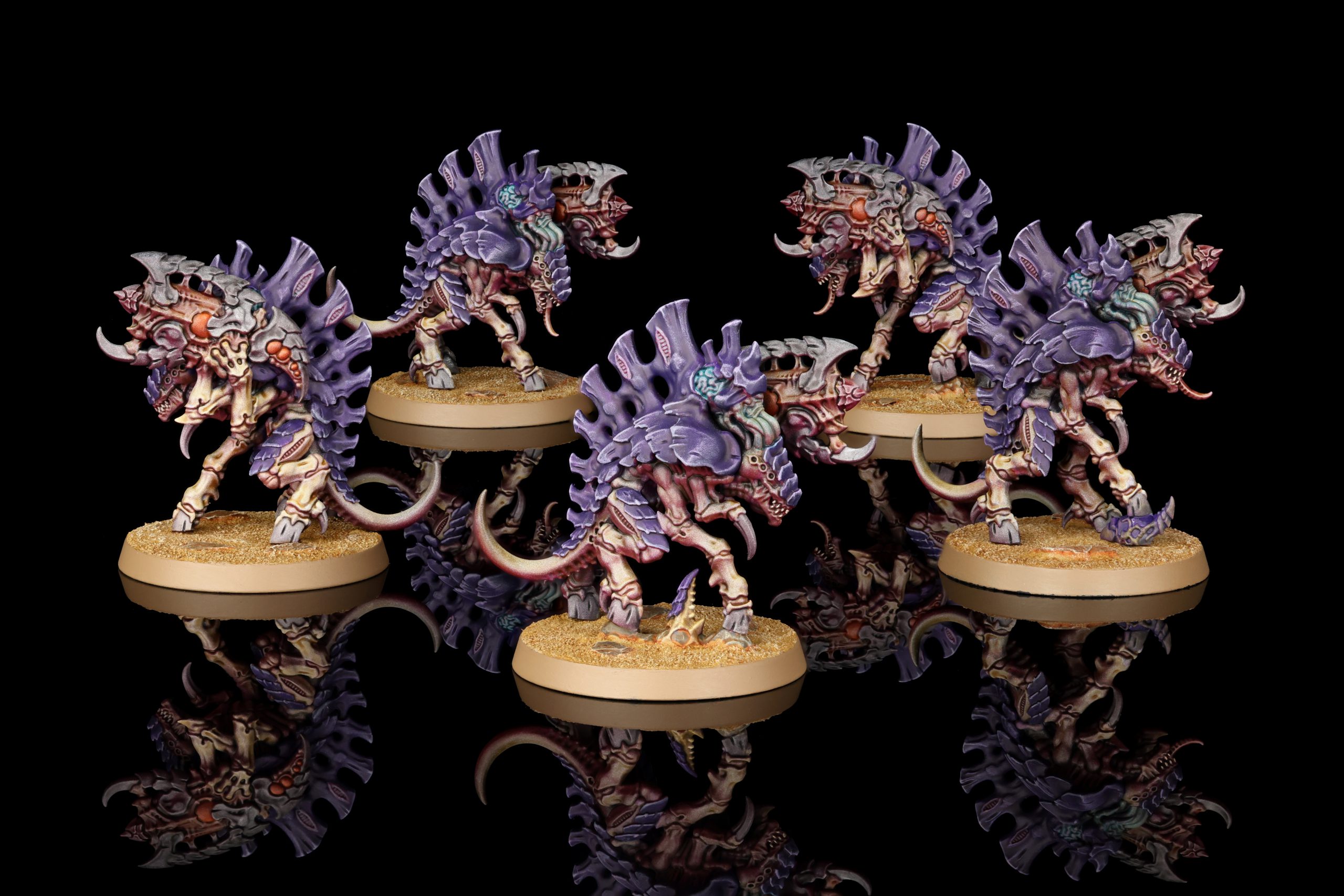
Finally, we have the chunky Barbgaunts, who also look pretty tasty. These are mid-weight infantry who can unleash good volumes of S5 AP0 firepower on the enemy with their bio-cannons, which are d6 shots Heavy Blast weapons, so great at clearing out hordes. The real reward though is the debuff they inflict – every unit hit by them gets disrupted, subtracting 2” from their M and any Advance/Charge rolls till the end of their next turn. It’s worth noting that Barbgaunts can split their fire and with d6 shots there’s a good chance of you effecting 3-5 units with this ability. This is a super good thing to hand out en-masse, and these are another unit that have some serious competitive potential at the right price.
Monsters
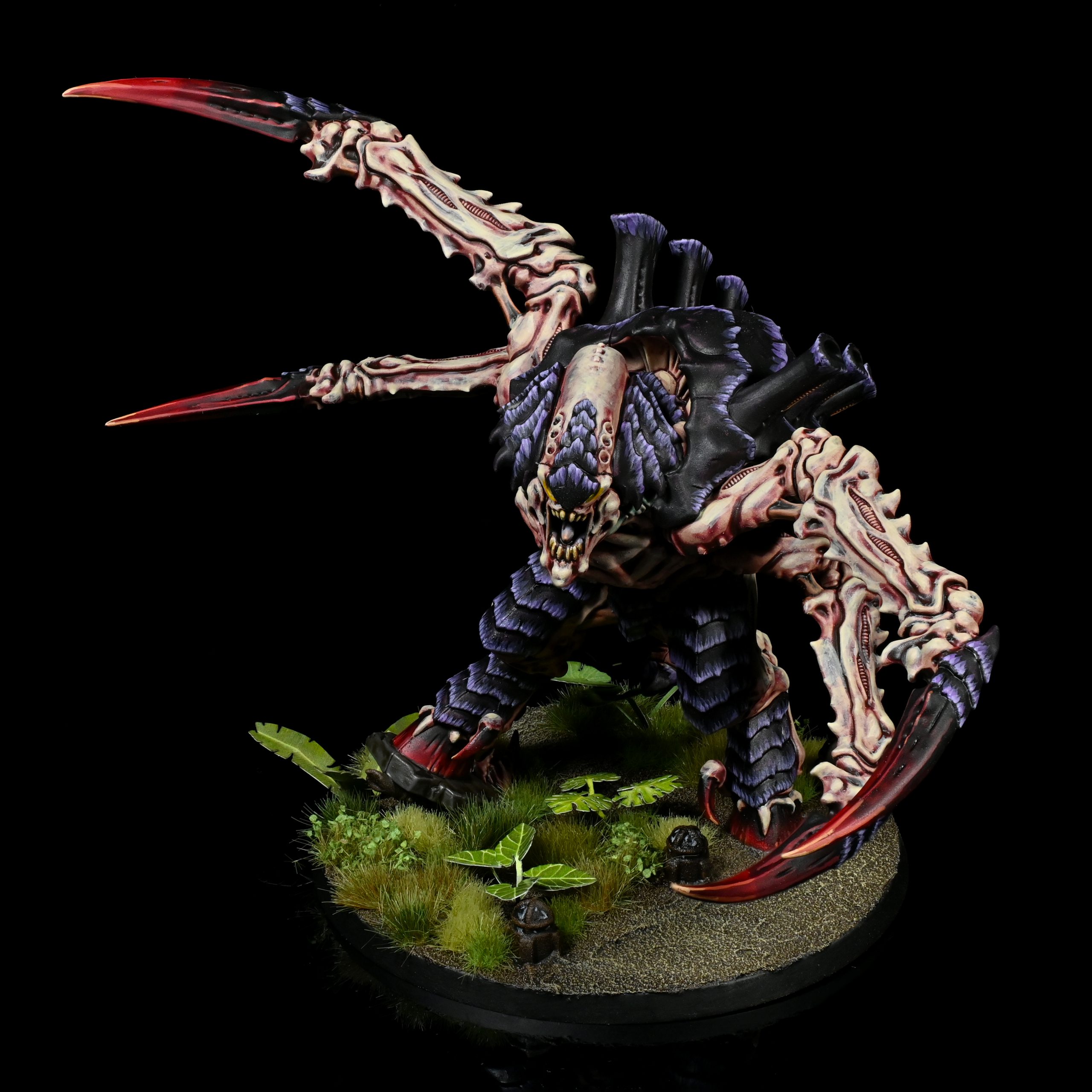
Capping things off and rounding out the box, Tyranids have two monsters. The first of these is a re-imagining of a classic, the Screamer Killer. It wants hugs. It provides these with an incredible 10 attacks with its screamer-killer talons, each striking at S10 AP-2 for 3 damage, perfectly statted for taking apart Terminators. It’s also got a handy ranged trick, unleashing a bio-plasmic scream as it advances, which is both going to scythe through single wound infantry and has applications against almost anything, as a target hit by it has to take a Battle-shock test at -1. You do not want to fight the Screamer Killer up close, and should do everything in your power to terminate it with extreme prejudice, though it’s 2+ save means that isn’t trivial.
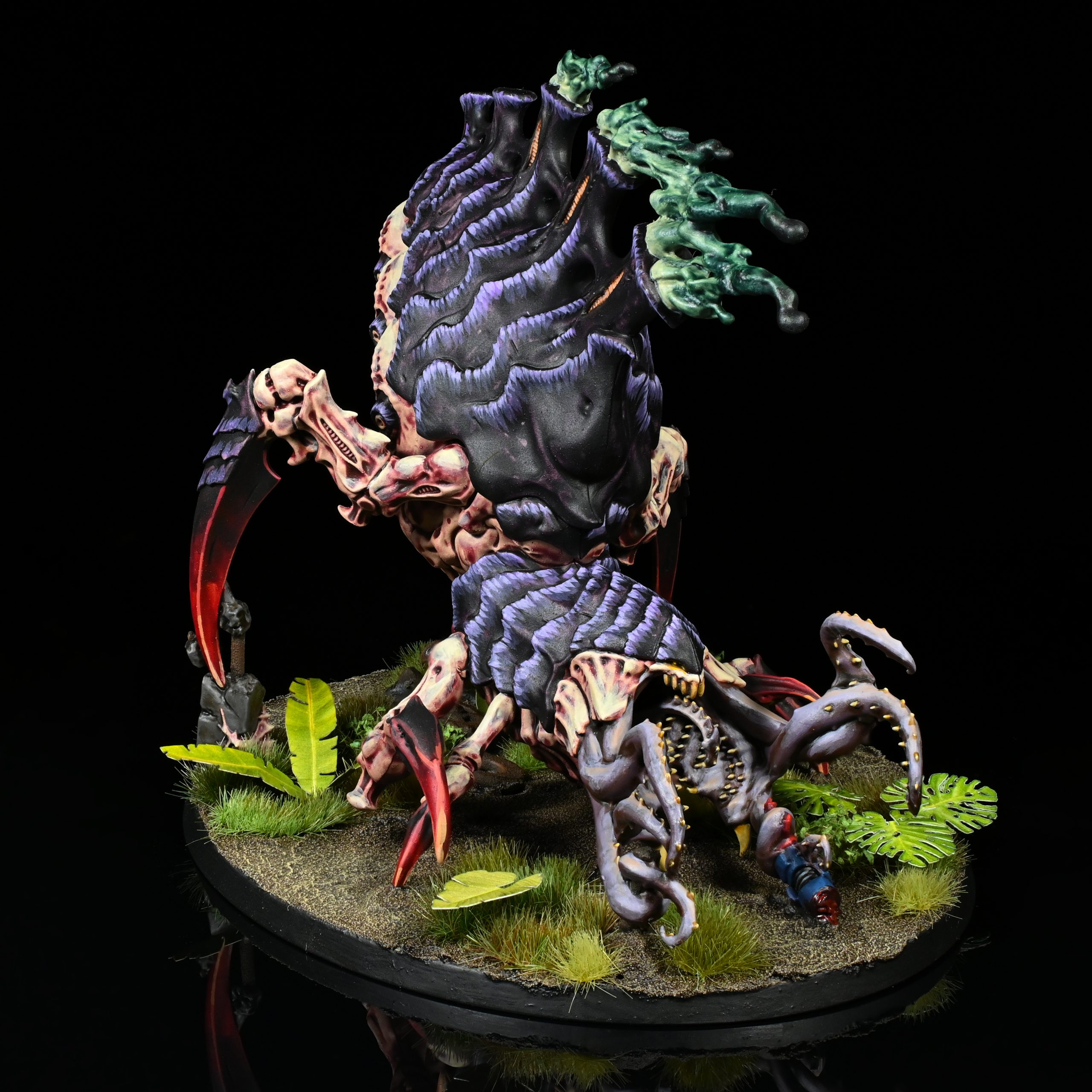
The other monstrosity in the box is the Psychophage, providing both a defensive buff and some anti-psyker killing power. Defensively, it has a 5+ Feel No Pain and provides a 6+ Aura of the same, which I like as a design choice – it means that if the opponent decides to kill it first to drop the aura, they’re wading through the better FNP. Beyond that, it has a decent flamer-style shooting attack, and a random but potentially nasty melee swing with its talons and maw. These make d6+1 attacks, and have the spooky combo of Anti-Psyker 2+ and Devastating Wounds – so yeah, unless it gets unlucky on the roll for number of attacks, any Psyker it hits is getting chomped. It also gets boosted hits against stuff on less than starting strength, and the overall impression is that it could see use in Psyker-heavy metagames.
Who Emerges Triumphant?
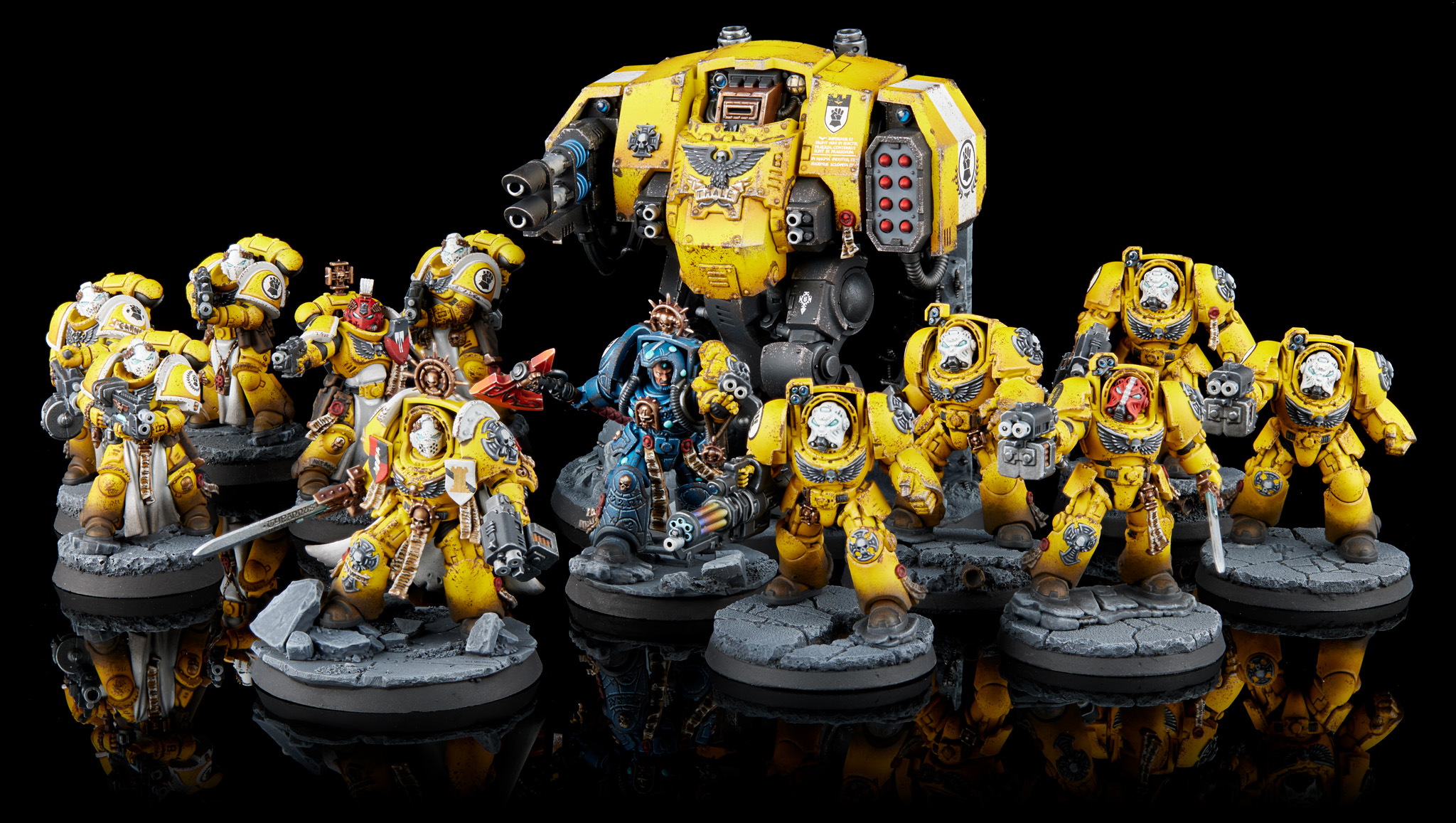
The better general, obviously – though it probably helps to play the Space Marines. Starter boxes are legendarily tricky to nail the balance on, and the Marines having the only serious ranged shooting threat (the Ballistus) gives them a lot of leeway to control how the battle flows. A Terminator brick is also a very strong all-round threat that the Tyranids have limited answers to, and that can potentially dominate the table. In their favour, the Tyranids do have a lot more models and some decent board control tools between the Leapers and the Barbgaunt debuff, plus the nasty threat of Shadow in the Warp boosted by the Neurotyrant, adding up to some angles of attack.

Our strong recommendation would be that if you’re an existing player using this to introduce a friend to 40K, you hand them the Marines and play the Tyranids yourself – the Marines have fewer units to think about, and a solid, forgiving central anvil in the Terminators. With good target priority they can probably also just take the bugs off the table, which isn’t super interesting, whereas the Tyranids provide an opportunity for a more experienced player to use their tricks to show how winning a battle isn’t always just about killing everything. Otherwise, as the bugs you probably need to focus everything on baiting the Terminators somewhere you can get the Screamer Killer into them, and cross your fingers from there. We will say that this looks like a substantially more balanced matchup than the 9th Edition Indomitus box was.
Wrap Up
That’s it for our first flurry of Tenth Edition coverage, but there’s going to be much, much more over the next few weeks, so make sure to check back in regularly.
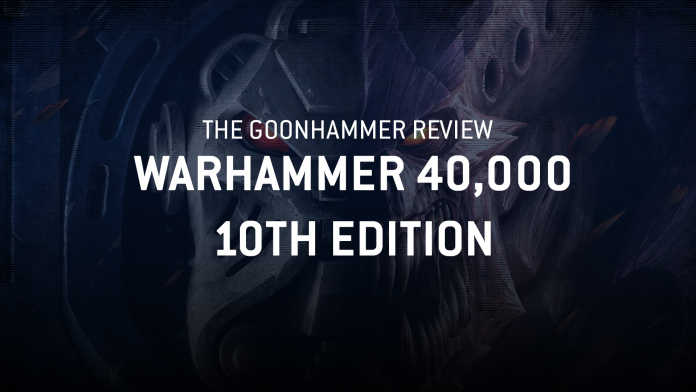


You must be logged in to post a comment.